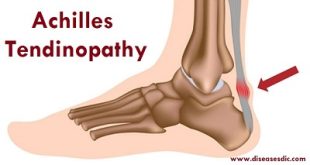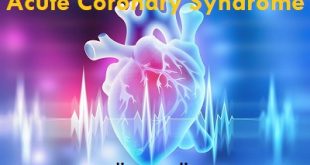Definition
Abdominal Aortic Aneurysm is an enlargement of the lower part of the aorta that extends through the abdominal area (at times, the upper portion of the aorta in the chest can be enlarged). The aorta is the main blood vessel that carries blood from the heart to the rest of the body. Like most arteries, the aorta is elastic, which allows it to be filled with blood under high pressure.
An aneurysm develops when the wall of the artery becomes weakened and distended like a balloon. The analogy of a bubble in a garden hose would be appropriate in describing an aneurysm. Aneurysms usually are discovered before they produce symptoms, such as back pain, but like the weakened hose, they may rupture if they become too large. Since a ruptured aneurysm is extremely dangerous and can cause life-threatening bleeding, aneurysms are best corrected by an operation before this happens.
Types of Abdominal Aortic Aneurysm
- Abdominal aneurysm- in an artery in the abdomen (mid-section)
- Thoracic aneurysm- in an artery in the chest area
- Cerebral aneurysm- in an artery in the brain (usually treated by neurosurgeons)
- Peripheral aneurysm- in the large arteries that run down the legs and behind the knees, and occasionally arms
Most aneurysms occur in the abdomen. Abdominal aortic aneurysms occur most frequently in people over age 60 and most commonly at a point in the aorta just below the level of the kidneys. Men are more commonly affected by aneurysms than women.
Risk factors
Risk factors include
- Smoking (strongest risk factor)
- Hypertension
- Older age (peak incidence at age 70 to 80)
- Family history (in 15 to 25%)
- Race (more common in whites than in blacks)
- Male sex
Abdominal Aortic Aneurysm Causes
An abdominal aortic aneurysm may be caused by multiple factors that result in the breaking down of the well-organized structural components (proteins) of the aortic wall that provide support and stabilize the wall. The exact cause is not fully known.
Atherosclerosis (a build-up of plaque, which is a deposit of fatty substances, cholesterol, cellular waste products, calcium, and fibrin in the inner lining of an artery) is thought to play an important role in aneurysmal disease, including the risk factors associated with atherosclerosis, such as:
- Age (greater than 60)
- Male (occurrence in males is four to five times greater than that of females)
- Family history (first-degree relatives such as father or brother)
- Genetic factors
- Hyperlipidemia (elevated fats in the blood)
- Hypertension (high blood pressure)
- Smoking
- Diabetes
Other diseases that may cause an abdominal aneurysm to include:
- Genetic disorders of connective tissue (abnormalities that can affect tissues such as bones, cartilage, heart, and blood vessels), such as Marfan syndrome, Ehlers-Danlos syndrome, Turner’s syndrome, and polycystic kidney disease
- Congenital (present at birth) syndromes, such as bicuspid aortic valve or coarctation of the aorta
- Giant cell arteritis – a disease that causes inflammation of the temporal arteries and other arteries in the head and neck, causing the arteries to narrow, reducing blood flow in the affected areas; may cause persistent headaches and vision loss
- Trauma
- Infectious aortitis (infections of the aorta) due to infections such as syphilis, salmonella, or staphylococcus. These infectious conditions are rare.
Symptoms
Aneurysms develop slowly over the course of several years, and since most people don’t experience symptoms, you may be unaware that you have an abdominal aortic aneurysm. However, if the aneurysm expands rapidly, tears open or leaks blood, you may have one or all of the following symptoms:
- Pain in the abdomen or back that isn’t relieved by switching positions or pain medication. The pain may be sudden, severe and constant and may spread to the legs, groin or buttocks.
- Fainting
- Clammy skin
- Dizziness
- Nausea and vomiting
- Rapid heart rate
- Shock
Complications of Abdominal Aortic Aneurysm
Tears in one or more of the layers of the wall of the aorta (aortic dissection) or a ruptured aneurysm are the main complications. A rupture can cause life-threatening internal bleeding. In general, the larger the aneurysm and the faster it grows, the greater the risk of rupture.
Signs and symptoms that your aortic aneurysm has ruptured can include:
- Sudden, intense and persistent abdominal or back pain, which can be described as a tearing sensation
- Low blood pressure
- Fast pulse
Aortic aneurysms also put you at risk of developing blood clots in the area. If a blood clot breaks loose from the inside wall of an aneurysm and blocks a blood vessel elsewhere in your body, it can cause pain or block the blood flow to the legs, toes, kidneys or abdominal organs.
Diagnosis and test
Doctors commonly find AAAs by chance during a routine exam. They also find them when doing tests for other issues, including unrelated pain in your abdomen. Doctors recommend an AAA screening for men ages 65 to 75 who have ever smoked.
If your doctor finds or thinks you have an AAA, he or she may order tests. Common tests include:
Ultrasound or echocardiogram: These use sound waves to create pictures of the inside of your body.
Computed tomography (CT) scan: The doctor uses X-rays to take pictures of your organs. Dye is injected into your veins so he or she can see them clearly.
Magnetic resonance imaging (MRI): This test uses magnets and radio waves to create pictures of your organs.
Angiography: This test uses dye and X-rays to look at the inside of your arteries. This can help your doctor see how much damage or blockage there is in your blood vessels.
If your doctor finds or thinks you might have an AAA, he or she might refer to you a specialist for treatment.
Treatment
Treatment may include:
- Monitoring with MRI or CT: These tests are done to check the size and rate of growth of the aneurysm.
- Managing risk factors: Some things may help control the aneurysm. These include quitting smoking, and controlling blood sugar if you have diabetes. They also include losing excess weight, and eating a healthy diet.
- Medicine: This is used to control factors such as high cholesterol or high blood pressure.
Surgery
Abdominal aortic aneurysm open repair: A large incision is made in the abdomen to let the surgeon see and repair the aneurysm. A mesh, metal coil-like tube called a stent or graft may be used. This graft is sewn to the aorta, connecting 1 end of the aorta at the site of the aneurysm to the other end. Open repair is the standard method of surgery for AAA.
Endovascular aneurysm repair (EVAR): EVAR needs only small incisions in the groin. It’s done with X-ray guidance and special tools. With these, the surgeon can repair the aneurysm by inserting the stent or graft inside the aorta. The graft material may cover the stent. The stent helps hold the graft open and in place.
Abdominal Aortic Aneurysm Prevention
To prevent an aortic aneurysm or keep an aortic aneurysm from worsening, do the following:
Don’t use tobacco products: Quit smoking or chewing tobacco and avoid secondhand smoke.
Eat a healthy diet: Focus on eating a variety of fruits and vegetables, whole grains, poultry, fish and low-fat dairy products. Avoid saturated fat, trans fats and limit salt.
Keep your blood pressure and cholesterol under control: If your doctor has prescribed medications, take them as instructed.
Get regular exercise: Try to get at least 150 minutes a week of moderate aerobic activity. If you haven’t been active, start slowly and build up. Talk to your doctor about what kinds of activities are right for you.
 Diseases Treatments Dictionary This is complete solution to read all diseases treatments Which covers Prevention, Causes, Symptoms, Medical Terms, Drugs, Prescription, Natural Remedies with cures and Treatments. Most of the common diseases were listed in names, split with categories.
Diseases Treatments Dictionary This is complete solution to read all diseases treatments Which covers Prevention, Causes, Symptoms, Medical Terms, Drugs, Prescription, Natural Remedies with cures and Treatments. Most of the common diseases were listed in names, split with categories.








All About It Is Very True Coz I Was As A Patient Of Such Disease And Immediately I Tried The Curative Measures, Am Now Fit.
Thanks for your help please I have been diagnosed but the doctor didn’t know the status of my sickness, but by researching I found that I have been diagnosed through this, though I do not smoke neither do I have dibeatis I feel I have that sickness in my stomach, what should I do. Thanks.
Please consult a doctor for management and treatment for this problem.
I feel severe pain in my lower left abdomine please what can you do to help me
Please consult a doctor for an appropriate prescription of drugs.
I have left side pain in abdoman and roaring
Possible causes of lower left abdomen pain is Diverticulitis, Celiac disease, Gas, Lactose intolerance, Inflammatory bowel diseases, Indigestion, Shingles, Irritable bowel syndrome (IBS), and Constipation.
Kindly contact a physician for further diagnosis and treatment measures.